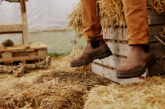
Stuart Turnbull, Regional Safety Manager at Honeywell Safety Products, explores the risks associated with winter working and the steps those responsible for safety can take to protect workers.
Often, the problem for outdoor workers is not when they are working, but rather when they are not. Whilst they are moving and active, the impact is significantly lessened and the effects are hardly felt, if at all. But what happens when they do stop, for example if work is unexpectedly interrupted, or if the weather deteriorates rapidly and without warning, or if they have to spend longer on a job than anticipated, or if they get wet – situations or conditions that are often not expected or planned?
Unsurprisingly perhaps, statistics from the Health and Safety Executive (HSE) in the UK – reveal more slip and trip accidents are reported in autumn and winter than at other times of the year. Taking a checklist approach can both reinforce what you are doing well and highlight possible areas to look at.
Maintaining bodily warmth
When exposed to cold temperatures, the body begins to lose heat faster than it can be produced. How quickly that happens will depend on a range of factors but prolonged exposure to cold will eventually use up the body’s stored energy, resulting in hypothermia, or abnormally low body temperature, affecting the brain, making the victim unable to think clearly or move well.
“It sounds obvious but ensure workers keep warm and dry at all times. Key to this will be the right type of workwear – in particular jackets and work trousers appropriate to the temperature and wind chill impact, designed specifically for the expected or potential weather conditions they will be used in.”
It sounds obvious but ensure workers keep warm and dry at all times. Key to this will be the right type of workwear – in particular jackets and work trousers appropriate to the temperature and wind chill impact, designed specifically for the expected or potential weather conditions they will be used in. It should be durable and provide thermal and waterproof performance yet be breathable, lightweight, not restrict movement and be easy to put on and take off.
Protecting the hands
Gloves remain one of the first things we turn to when the weather gets cold, but even here it is worth considering the way people will be working when looking at what hand protection is needed.
In construction, workers may already have been equipped with hand protection to guard against mechanical and chemical hazards. Where the elements will increase the chances of cold and wet working however, thermal and water-resistant capabilities need to be considered and combined with the protective requirements.
Go for gloves that offer both thermal and water resistant protection, for example Nitrile which also offers grip and flexibility, combined with a thermal fleece polar lining. Protective gloves should be provided and worn by employees whenever the temperature drops to 4°C for anything considered ‘light work’.
Protecting the feet
Selecting safety footwear that features enhanced slip resistance on the sole, a self-cleaning tread design and high flexibility and durability can help. It is also important that the upper is manufactured from a  water resistant or water-proof material and given that workers will be in the cold, the footwear should have specialist thermal lining to keep the feet warm whilst enabling them to breathe to prevent overheating.
water resistant or water-proof material and given that workers will be in the cold, the footwear should have specialist thermal lining to keep the feet warm whilst enabling them to breathe to prevent overheating.
An easy way of identifying if safety footwear has been tested for slip resistance is to check if coefficient of friction (CoF) test values are available. CoF data can be requested from the supplier and may be available in their brochure or on their website. The higher the CoF, the better the slip resistance. Look for CoF results higher than the minimum requirements set out in EN ISO 20345/6/7: 2004 (A1:2007) – the standards for safety, protective and occupational footwear. Footwear which has passed the EN test for slip resistance will be marked with one of the following codes, SRA (tested on ceramic tile wetted with dilute soap solution), SRB (tested on smooth steel with glycerol) or SRC (tested under both conditions).
Visibility
With daylight hours reduced in winter, visibility can become an issue. Not only in terms of ensuring workers can see as mentioned earlier, but also that they can be seen by their colleagues and, in some cases, members of the public. In this situation workwear with reflective material incorporated into it is recommended. High visibility earmuffs can also be worn to provide extra protection.
Equipping vehicles
For workers particularly involved in travelling from site to site, ensuring that they have a range of winter clothing with them in their vehicle is a sensible approach. Even though they are not working outdoors all of the time, it is important that when they are they are protected and are also prepared with adequate protection in the event of a break down or becoming stranded in their vehicle.








